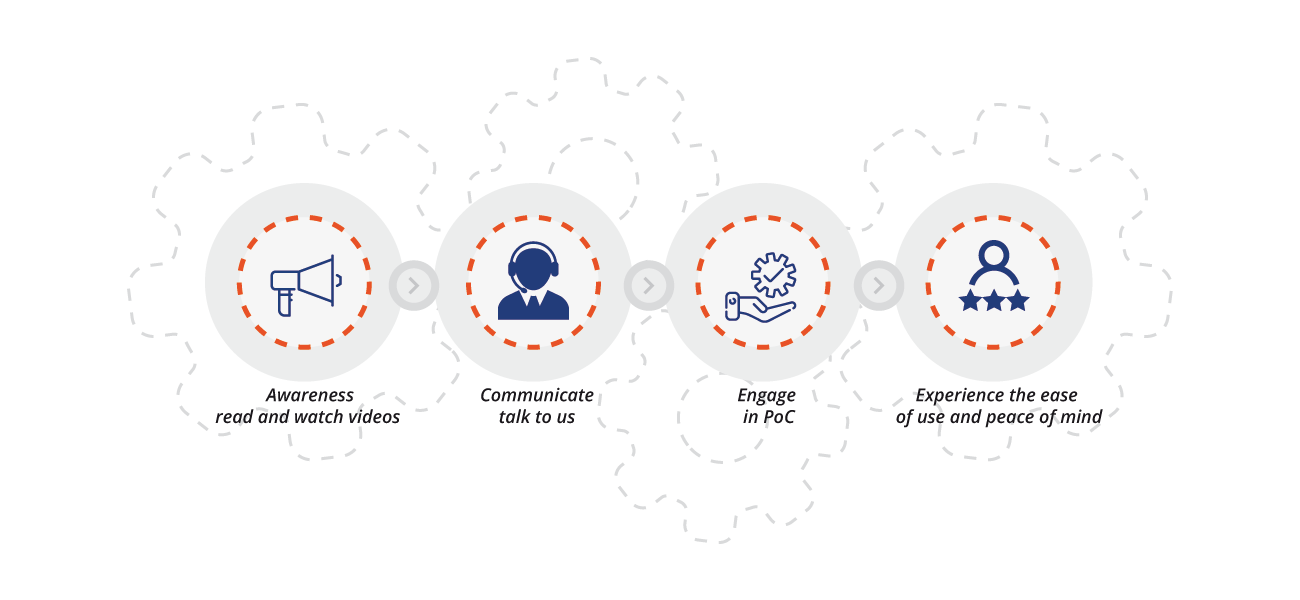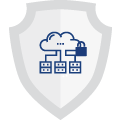

Ransomware Protection
Most ransomware uses the AES algorithm to encrypt fles, though some use alternative algorithms. To decrypt fles, cyber extortionists typically request payment in the form of Bitcoins or online payment voucher services, such as Ukash or Paysafecard.
The standard rate is about $500, though we’ve seen much higher. Cyber criminals behind ransomware campaigns typically focus their attacks in wealthy countries and cities where people and businesses can afford to pay the ransom. In recent months, we’ve seen repeated attacks on specific verticals, most notably in the local government sector.
How Step Ahead provides Ransomware Protection?
Step Ahead will help the customer build a cyber security policy if one is not already in place. The following steps will be advised and implement by Step Ahead for its customers.
How Ransomware Protection Works?
Step Ahead will take snapshot-based, incremental backups as frequently as every five minutes to create a series of recovery points. If your business suffers a ransomware attack, this technology allows you to roll-back your data to a point-in-time before the corruption occurred. When it comes to ransomware, the benefit of this is twofold.
Firstly, you don’t need to pay the ransom to get your data back. Secondly, since you are restoring your data to a point-in-time before the ransomware infected your systems, you can be certain everything is clean and the malware cannot be triggered again.
Step Ahead’s data protection allows users to run applications from image-based backups of virtual machines. This capability is commonly referred to as “recovery-in-place” or “instant recovery.” This technology can be useful for recovering from a ransomware attack, because it allows you to continue operations while your primary systems are being restored with little to no downtime.
Timeline Visual

Without a business continuity policy in force, you are bound to suffer the consequences
SaaS apps provide limited protection against accidental data loss scenarios, and sometimes even less so when it comes to ransomware attacks or malicious end user activity. This is because many vendors operate under the “Shared Responsibility Model” – they only claim responsibility for areas that they have complete control over. Microsoft and Google must maintain the availability of their applications and protect their servers from disaster scenarios, but the end user is responsible for creating the data within their applications. Step Ahead provides the buffer against data loss between SaaS providers and end customers.

Cybersecurity And Small Businesses
- According to the FBI’s 2017 Internet Crime Report, Internet Crime Complaint Center, or IC3, received 1,783 complaints identified as ransomware, resulting in losses of over $2.3 million
- In 2017 – 61% of cyber-attacks were against small businesses (SB) with less than 250 workers
- 62% of all cyber-attacks target small and medium businesses (SMB)
- Many small businesses don’t have cyber security policy, anti-phishing email measures, data encryption or off-site backups
- Ransomware increased by 36% in 2017; over 4000 attacks occur each day according to the FBI.
- It takes most small businesses 197 days to realize they have an attacker in their network.
- 78% of people in a recent survey know it’s bad to click on a link or attachment in an email of unknown origin, but do it anyway




